当前位置:网站首页>[pytorch practice] use pytorch to realize image style migration based on neural network
[pytorch practice] use pytorch to realize image style migration based on neural network
2022-07-07 12:33:00 【Sickle leek】
use PyTorch Realize image style migration based on Neural Network
Style transfer , Also known as style transformation . Just give the original picture , And choose the artist's style pictures , You can convert the original picture into a picture with the corresponding artist style . The style transfer of images starts from 2015 year Gatys The paper of “Image Style Transfer Using Convolutional Neural Networks”, What we do is to fuse a content image with a style image , Get the composite image after style rendering . Examples are as follows : 
1. Introduction to the principle of style transfer
There are two types of pictures in style transfer : One is Style picture , It's usually the work of some artists , Often with obvious artist style , Including color 、 line 、 Outline, etc ; The other is Content picture , These pictures often come from the real world , Such as personal photography . Using style migration, we can convert content pictures into artist style pictures .
Gatys The method proposed by et al. Is called Neural Style, But their implementation is too complicated .Justin Johnson Et al. Proposed an algorithm to quickly realize style migration , be called Fast Neural Style. When used Fast Neural Style After training a style model , Usually it's just GPU Run for a few seconds , The corresponding style transfer effect can be generated .
Fast Neural Style and Neural Style There are mainly the following two differences :
(1)Fast Neural Style Train a model for each style image , Then it can be used repeatedly , Fast style migration .Neural Style No special training model is required , Just constantly adjust the pixel value of the image from the noise , The guidance finally gets the structure , Slower , It takes more than ten minutes to dozens of minutes .
(2) It is generally believed that Neural Style The effect of the generated image will be better than Fast Neural Style The effect is good .
Here we mainly introduce Fast Neural Style The implementation of the .
To produce realistic style migration pictures , There are two requirements :
- The image to be generated is in the content 、 The details should be similar to the input content image as much as possible ;
- The image to be generated is similar to the style image as much as possible .
Accordingly , Define two losses content loss and style loss, Used to measure the above two indicators .
- content loss The commonly used method is to calculate the difference per pixel , also called pixel-wise loss, The difference between the generated image and the original image per pixel should be as small as possible . But this method has many irrationalities ,Justin A better calculation is proposed content loss Methods , be called perceptual loss. differ pixel-wise loss Calculate the difference at the pixel level ,perceptual loss What we calculate is the difference of images at a higher semantic level . Use the upper layer of the pre trained neural network as the perceptual feature of the picture , Then calculate the difference between the two as perceptual loss.
During style transfer , The pixels of the generated image are not required to be the same as each pixel in the original image , The pursuit is that the generated image has the same characteristics as the original image .
In general use Gram matrix To represent the style characteristics of the image . For every picture , The output shape of the convolution layer is C × H × W C\times H\times W C×H×W,C Is the number of channels of convolution kernel , It is generally called having C Convolution kernels , Each convolution kernel learns different features of the image . The output of each convolution kernel H × W H\times W H×W One representing this image feature map, It can be considered as a special image —— The original color image can be regarded as RGB Three feature map Special stitching feature map. By calculating each feature map Similarity between , You can get the style characteristics of the image . For one C × H × W C\times H\times W C×H×W Of feature maps F F F,Gram Matrix The shape of is C × C C\times C C×C, Its first i , j i,j i,j Elements G i , j G_{i,j} Gi,j The calculation of is as follows :
G i , j = ∑ k F i k F j k G_{i,j}=\sum_{k}F_{ik}F_{jk} Gi,j=k∑FikFjk
among F i k F_{ik} Fik On behalf of the i individual feature map Of the k Pixels .
It should be noted that :
- Gram Matrix The calculation of adopts the form of accumulation , Abandoning spatial information .
- Gram Matrix The result of feature maps F Regardless of the scale of , Only related to the number of channels . No matter what H,W What's the size of , Last Gram Matrix All shapes are C×C.
- For one C × H × W C\times H\times W C×H×W Of feature maps, It can be quickly calculated by adjusting the shape and matrix multiplication Gram Matrix, That will be first F Adjusted for C × ( H W ) C\times (HW) C×(HW) Two dimensional matrix of , And then calculate F ⋅ F T F\cdot F^T F⋅FT, The result is Gram Matrix.
Practice has proved the use of Gram Matrix The style characteristics of the image are transferred in style 、 Excellent performance in tasks such as texture synthesis . All in all :
- The high-level output of neural network can be used as the perceptual feature description of image
- High level output of neural network Gram Matrix It can be used as the style feature description of the image .
- The goal of style transfer is to make the perceptual characteristics of the generated image and the original image as similar as possible , And the style characteristics of style pictures are as similar as possible .
2. Fast Neural Style Network structure
Fast Neural Style It specifically involves a network for style migration , Input the original picture , The network will automatically generate the target image . As shown in the figure below :
The whole network is composed of two parts :Image transformation network、 Loss Netwrok;
- Image Transformation network It's a deep residual conv netwrok, Used to input image (content image) direct transform With style Image ;
- and loss network Parameter is fixed Of , there loss network and A Neural Algorithm of Artistic Style The network structure in is consistent , Just don't update the parameters (neural style Of weight It 's also constant , The difference is pixel level loss and per loss The difference between ,neural style Inside is the update pixel , Get the final composite photo ), It's just for content loss and style loss The calculation of , This is what we call perceptual loss,
One is the network that generates pictures , It's the one in front of the picture , Mainly used to generate pictures , Behind it is a VGG The Internet , Mainly feature extraction , In fact, these characteristics are used to calculate the loss , When we train, we only train the front network , The later use is based on ImageNet Trained models , Do feature extraction directly .
As shown in the figure above , x x x It's the input image , In the task of style transfer y c = x y_c=x yc=x, y s y_s ys It's a style picture ,Image Transform Net f W f_W fW It is the style migration network we are involved in , Image for input x x x, Can return a new image y ^ \hat{y} y^, y ^ \hat{y} y^ In terms of image content, it is similar to y c y_c yc be similar , But in style, it is different from y s y_s ys be similar . Loss network (loss network) No training , It is only used to calculate perceptual characteristics and style characteristics . Loss network adopts ImageNet It's pre trained VGG-16.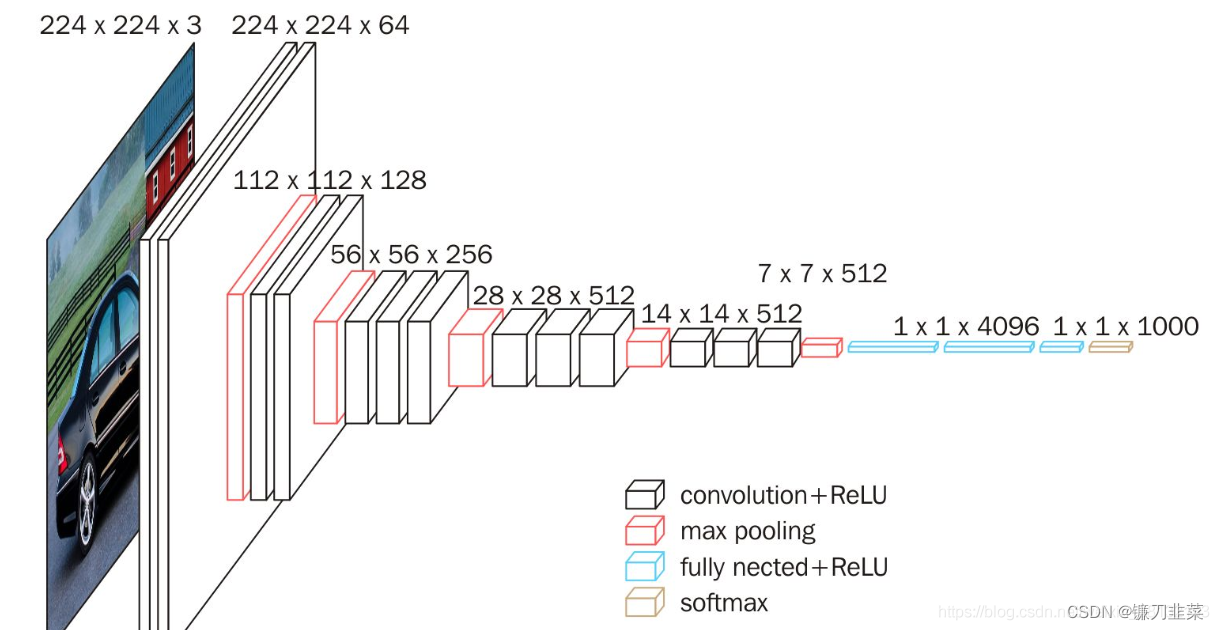

Network from left to right 5 Convolution blocks , Two convolution blocks pass through MaxPooling Layer differentiation , Each convolution block has 2~3 Convolution layers , Each convolution layer is followed by ReLU Activate once . among relu2_2 It means the first one 2 The th of convolution block 2 The active layer of a convolution layer (ReLU) Output .
Fast Neural Style The training steps are as follows :
(1) Enter a picture x To f W f_W fW in , Get the results y ^ \hat{y} y^;
(2) take y ^ \hat{y} y^ and y c y_c yc( In fact, that is x) Input to loss network(VGG-16) in , Calculate where it is relu3_3 Output , And calculate the mean square error between them as content loss.
(3) take y ^ \hat{y} y^ and y s y_s ys( Style picture ) Input to loss network in , Calculate where it is relu1_2,relu2_2,relu3_3 and relu4_3 Output , Then calculate their Gram Matrix The mean square error of is taken as style loss.
(4) The two losses add up , And back propagation . to update f W f_W fW Parameters of , Fix loss network Immobility .
(5) Jump back to the first step , Keep training f W f_W fW.
First understand the structure of the full convolution network . The input is a picture , The output is also a picture , This kind of network is generally implemented as a network structure with all convolution layers but no all connection layers . For the convolution layer , When the input feature map( Or pictures ) The size is C i n × H i n × W i n C_{in}\times H_{in}\times W_{in} Cin×Hin×Win, The convolution kernel has C o u t C_{out} Cout individual , The size of the convolution kernel is K K K,padding The size is P P P、 In steps of S S S when , Output feature maps The shape of is C o u t × H o u t × W o u t C_{out}\times H_{out}\times W_{out} Cout×Hout×Wout, among
H o u t = f l o o r ( H i n + 2 ∗ P − K ) / S + 1 H_{out}=floor(H_{in}+2\ast P-K)/S+1 Hout=floor(Hin+2∗P−K)/S+1
W o u t = f l o o r ( W i n + 2 ∗ P − K ) / S + 1 W_{out}=floor(W_{in}+2\ast P-K)/S+1 Wout=floor(Win+2∗P−K)/S+1
If the size of the input picture is 3×256×256, The convolution kernel size of the first layer convolution is 3,padding by 1, In steps of 2, The number of channels is 128, So the output feature map shape , According to the above formula, the result is :
H o u t = f l o o r ( 256 + 2 ∗ 1 − 3 ) / 2 + 1 = 128 H_{out} = floor(256+2\ast 1-3)/2+1=128 Hout=floor(256+2∗1−3)/2+1=128
W o u t = f l o o r ( 256 + 2 ∗ 1 − 3 ) / 2 + 1 = 128 W_{out} =floor(256+2\ast 1-3)/2+1=128 Wout=floor(256+2∗1−3)/2+1=128
So the final output is C o u t × H o u t × W o u t = 128 × 128 × 128 C_{out}\times H_{out}\times W_{out}=128\times 128\times 128 Cout×Hout×Wout=128×128×128, That is, the scale is reduced by half , The number of channels increases . If the step size is changed from 2 Change to 1, Then the output shape is 128×256×256, That is, the scale remains unchanged , Only the number of channels increases .
In addition to the convolution layer , There's another one called Transpose the convolution layer (Transposed Convolution), Some people call it deconvolution (DeConvolution), It can be simply regarded as the inverse operation of convolution . For the convolution operation , When the step length is greater than 1 when , It performs operations similar to down sampling , And for transpose convolution , When the step length is greater than 1 when , It performs operations similar to upsampling . An important advantage of full convolution networks is that there is no requirement for the size of the input , In this way, images with different resolutions can be accepted when style migration .
The style transfer structure mentioned in the paper is all composed of convolution 、Batch Normalization And activation layer , Does not include the full connection layer , We don't use Batch Normalization, In its place Instance Normalization.
Instance Normalization and Batch Normalization The only difference is InstaneNorm Only calculate the mean and variance of each sample , and BatchNorm Will be to a batch Find the mean value of all samples in .
For example, for a B×C×H×W Of tensor, stay Batch Normalization When calculating the mean in , Will calculate B×H×W The mean of the number , share C A mean , and Instance Normalization Calculation H×W The mean of the number , The total of B×C A mean .
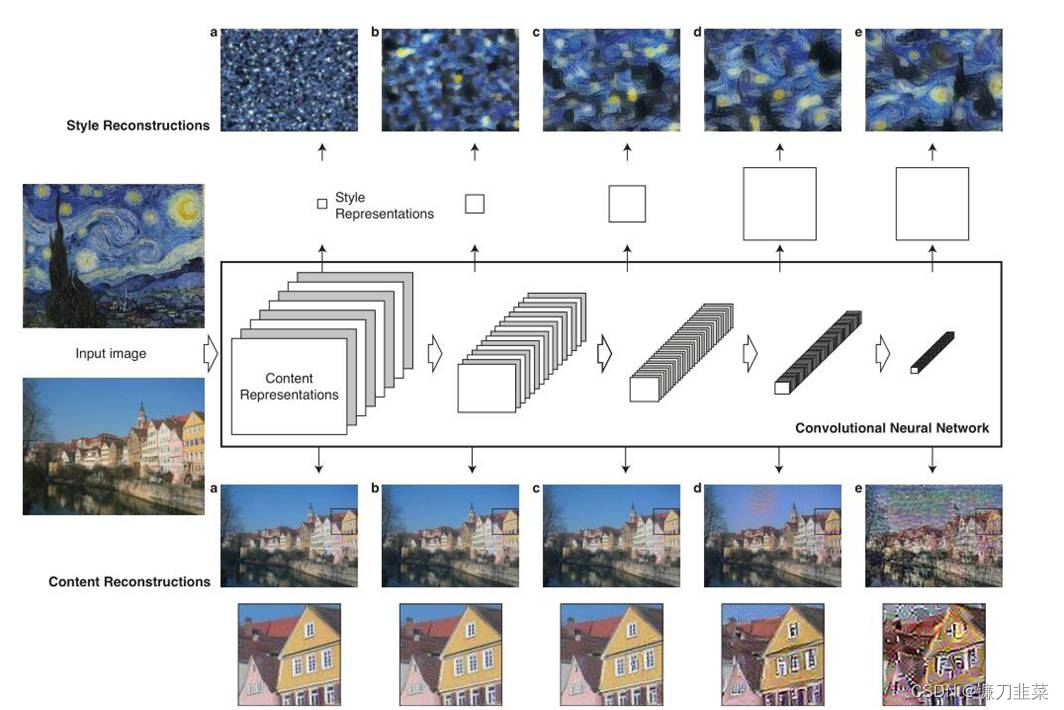
As shown in the figure above , The two pictures on the far left (input image) One is input as content , One is input as style , Go through separately VGG16 Of 5 individual block, It can be seen from the shallow and deep , The resulting feature map (feature map) The height and width of gradually decrease , But the depth is gradually increasing ,Gatys In order to let people see each more intuitively block Extracted features , So I made a trick, namely Feature reconstruction , The extracted features are visualized . But you can see that ,** To a large extent, the extraction of content image features preserves the information of the original image , But for style pictures , Basically, I can't see the appearance of the original picture , It can be roughly considered that the extracted style . Why is that ?** It turns out that the feature extraction processing for these two images is different , You can see in the next picture .
The pictures on both sides are style pictures , Write it down as a → \overrightarrow{a} a, And content pictures p → \overrightarrow{p} p, At the same time, we also need a third randomly generated noise picture , You need to iterate over noisy images constantly , Until you get a composite picture that combines content and style . Content picture p → \overrightarrow{p} p after VGG16 Online 5 individual block You will get feature map, Write it down as P l P^l Pl, That is to say l individual block The resulting features , Noise picture x → \overrightarrow{x} x after VGG16 Online 5 individual block The obtained characteristic map is marked as F l F^l Fl.
For content loss , Take only Conv4_2 Characteristics of the layer , Calculate the Euclidean distance between content image features and noise image features , Formula for :
L c o n t e n t ( p → , x → , l ) = 1 2 ∑ i , j ( F i j l − P i j l ) 2 \mathcal{L}_{content}(\overrightarrow{p},\overrightarrow{x}, l)=\frac{1}{2}\sum_{i,j}(F_{ij}^l-P_{ij}^l)^2 Lcontent(p,x,l)=21i,j∑(Fijl−Pijl)2
Loss of style , The calculation method is somewhat different . According to the above known , Noise picture x → \overrightarrow{x} x after VGG16 Online 5 individual block The obtained characteristics are recorded as F l F^l Fl, F l F^l Fl Of gram The matrix is written as G l G^l Gl, Style picture a → \overrightarrow{a} a The resulting feature map , Calculate again gram The content obtained after the matrix is recorded as A l A^l Al, Calculated after G l G^l Gl and A l A^l Al European distance between , among gram The formula of the matrix is :
KaTeX parse error: Can't use function '$' in math mode at position 9: G_{ij}^l$̲=\sum_k F_{ik}^…
The formula of style loss is :
E l = 1 4 N l 2 M l 2 ∑ i , j ( G i j l − A i j l ) 2 E_l=\frac{1}{4N_l^2M_l^2}\sum_{i,j}(G_{ij}^l-A_{ij}^l)^2 El=4Nl2Ml21i,j∑(Gijl−Aijl)2
The coefficient before the formula is a standardized operation , That is, divide by the square of the area .
It should be noted that , When calculating style loss ,5 individual block The extracted features are used to calculate , When calculating content loss , Actually, only the fourth one is used block Extracted features . This is because of each block The extracted style features are different , Participation in computing can increase the diversity of styles , And each of the content pictures block The extracted features have little difference , So just take one .
The total loss is the linear sum of content loss and style loss , change α and β The proportion of content and style can be adjusted .
L t o t a l ( p → , a → , x → ) = α L c o n t e n t ( p → , x → ) + β L s t y l e ( a → , x → ) \mathcal{L}_{total}(\overrightarrow{p}, \overrightarrow{a}, \overrightarrow{x})=\alpha \mathcal{L}_{content}(\overrightarrow{p}, \overrightarrow{x})+\beta \mathcal{L}_{style}(\overrightarrow{a}, \overrightarrow{x}) Ltotal(p,a,x)=αLcontent(p,x)+βLstyle(a,x)
The code also uses a trick, total loss We will add a total variation loss Used to reduce noise , Make the composite image look smoother .
The last thing to note is this ,Gatys Calculated total loss It's a noise picture x → \overrightarrow{x} x Finding partial derivatives , and Johnson Calculated loss Is the weight of the custom network w Finding partial derivatives .
3. use PyTorch Achieve style migration
Dataset download address :https://pjreddie.com/projects/coco-mirror/
3.1 First look at how to use pre training VGG.
class Vgg16(nn.Module):
def __init__(self, requires_grad=False):
super(Vgg16, self).__init__()
vgg_pretrained_ft = vgg16(pretrained=False)
vgg_pretrained_ft.load_state_dict(torch.load("vgg16-397923af.pth"))
vgg_pretrained_features = nn.Sequential(*list(vgg_pretrained_ft.features.children()))
self.slice1 = nn.Sequential()
self.slice2 = nn.Sequential()
self.slice3 = nn.Sequential()
self.slice4 = nn.Sequential()
for x in range(4):
self.slice1.add_module(str(x), vgg_pretrained_features[x])
for x in range(4, 9):
self.slice2.add_module(str(x), vgg_pretrained_features[x])
for x in range(9, 16):
self.slice3.add_module(str(x), vgg_pretrained_features[x])
for x in range(16, 23):
self.slice4.add_module(str(x), vgg_pretrained_features[x])
if not requires_grad:
for param in self.parameters():
param.requires_grad = False
def forward(self, X):
h = self.slice1(X)
h_relu1_2 = h
h = self.slice2(h)
h_relu2_2 = h
h = self.slice3(h)
h_relu3_3 = h
h = self.slice4(h)
h_relu4_3 = h
vgg_outputs = namedtuple('VggOutputs', ['relu1_2', 'relu2_2', 'relu3_3', 'relu4_3'])
result = vgg_outputs(h_relu1_2, h_relu2_2, h_relu3_3, h_relu4_3)
return result
In the style migration network , You need to get the output of the middle layer , Therefore, it is necessary to modify the forward propagation process of the network , Save the output of the corresponding layer . At the same time, there are many layers that do not need , It can be deleted to save content .
** stay torchvision in , VGG The implementation of consists of two nn.Sequential Object composition , One is features, Inclusion convolution 、 Activate and MaxPool layer , Used to extract image features ; The other is classifier, Including full connection , Used to classify .** Can pass vgg.features Directly obtain the corresponding nn.Sequential object . In this way, when propagating forward , After calculating the output of the specified layer , Save the results in a list in , And then use namedtuple Name binding , So that you can get through output.relu1_2 Access the first element , More convenient and intuitive . Of course, we can also use layer.register_forward_hook Get the output of the corresponding layer .
3.2 Next, we need to realize style migration network
Realize style migration network reference Pytorch An official example of , Its structure can be summarized as follows :
- First down sampling , Post up sampling , Reduce the amount of calculation
- Use the residual structure to make the network deeper
- The way of edge filling is no longer the traditional way of filling 0, Instead, a method called Reflection Pad Complement strategy : The pixels of the upper, lower, left and right reflection edges are complemented .
- Upsampling no longer uses traditional ConvTransposed2d, But first Upsample, And then use Conv2d, Do this to avoid Checkerboard Artifacts The phenomenon .
- Batch Normalization All changed Instance Normalization.
- There is no full connection layer in the network , Linear operation is convolution , Therefore, there is no requirement for the size of input and output .
For common network structures , It can be realized as nn.Module object , As a special layer . therefore , take Conv,UpConv And residual blocks are implemented as a special layer :
# -*- coding: utf-8 -*-#
# ----------------------------------------------
# Name: transformer_net.py
# Description:
# Author: PANG
# Date: 2022/6/27
# ----------------------------------------------
class ConvLayer(nn.Module):
""" add ReflectionPad for Conv The default convolution padding Operation is complement 0, Here we use boundary reflection filling """
def __init__(self, in_channels, out_channels, kernel_size, stride):
super(ConvLayer, self).__init__()
reflection_padding = int(np.floor(kernel_size / 2))
self.reflection_pad = nn.ReflectionPad2d(reflection_padding)
self.conv2d = nn.Conv2d(in_channels, out_channels, kernel_size, stride)
def forward(self, x):
out = self.reflection_pad(x)
out = self.conv2d(out)
return out
class UpsampleConvLayer(nn.Module):
""" The default convolution padding Operation is complement 0, Here we use boundary reflection filling Sample first , Then do a convolution (Conv2d), Instead of adopting ConvTranspose2d """
def __init__(self, in_channels, out_channels, kernel_size, stride, upsample=None):
super(UpsampleConvLayer, self).__init__()
self.upsample = upsample
reflection_padding = int(np.floor(kernel_size / 2))
self.reflection_pad = nn.ReflectionPad2d(reflection_padding)
self.conv2d = nn.Conv2d(in_channels, out_channels, kernel_size, stride)
def forward(self, x):
x_in = x
if self.upsample:
x_in = nn.functional.interpolate(x_in, mode='nearest', scale_factor=self.upsample)
out = self.reflection_pad(x_in)
out = self.conv2d(out)
return out
class ResidualBlock(nn.Module):
""" introduced in: https://arxiv.org/abs/1512.03385 recommended architecture: http://torch.ch/blog/2016/02/04/resnets.html """
def __init__(self, channels):
super(ResidualBlock, self).__init__()
self.conv1 = ConvLayer(channels, channels, kernel_size=3, stride=1)
self.in1 = nn.InstanceNorm2d(channels, affine=True)
self.conv2 = ConvLayer(channels, channels, kernel_size=3, stride=1)
self.in2 = nn.InstanceNorm2d(channels, affine=True)
self.relu = nn.ReLU()
def forward(self, x):
residual = x
out = self.relu(self.in1(self.conv1(x)))
out = self.in2(self.conv2(out))
out = out + residual
return out
class TransformerNet(nn.Module):
def __init__(self):
super(TransformerNet, self).__init__()
# Lower convolution
self.initial_layers = torch.nn.Sequential(
ConvLayer(3, 32, kernel_size=9, stride=1),
nn.InstanceNorm2d(32, affine=True),
nn.ReLU(True),
ConvLayer(32, 64, kernel_size=3, stride=2),
torch.nn.InstanceNorm2d(64, affine=True),
torch.nn.ReLU(True),
ConvLayer(64, 128, kernel_size=3, stride=2),
torch.nn.InstanceNorm2d(128, affine=True),
torch.nn.ReLU(True)
)
# Residual layers( Residual layer )
self.res_layers = torch.nn.Sequential(
ResidualBlock(128),
ResidualBlock(128),
ResidualBlock(128),
ResidualBlock(128),
ResidualBlock(128)
)
# Upsampling layers( Upper sampling layer )
self.upsample_layers = torch.nn.Sequential(
UpsampleConvLayer(128, 64, kernel_size=3, stride=1, upsample=2),
torch.nn.InstanceNorm2d(64, affine=True),
torch.nn.ReLU(True),
UpsampleConvLayer(64, 32, kernel_size=3, stride=1, upsample=2),
torch.nn.InstanceNorm2d(32, affine=True),
torch.nn.ReLU(True),
ConvLayer(32, 3, kernel_size=9, stride=1)
)
def forward(self, X):
y = self.initial_layers(X)
y = self.res_layers(y)
y = self.upsample_layers(y)
return y
stay TransformerNet There are three parts in it : Down sampled convolution layer , Depth residual layer and up sampled convolution layer . It makes full use of nn.Sequential, To avoid the forward Write code repeatedly in .
After setting up the network , Need to implement some tool functions , for example gram_matrix.
from PIL import Image
IMAGENET_MEAN = [0.485, 0.456, 0.406]
IMAGENET_STD = [0.229, 0.224, 0.225]
def load_image(filename, size=None, scale=None):
img = Image.open(filename).convert('RGB')
if size is not None:
img = img.resize((size, size), Image.ANTIALIAS)
elif scale is not None:
img = img.resize((int(img.size[0] / scale), int(img.size[1] / scale)), Image.ANTIALIAS)
return img
def save_image(filename, data):
img = data.clone().clamp(0, 255).numpy()
img = img.transpose(1, 2, 0).astype('uint8')
img = Image.fromarray(img)
img.save(filename)
def gram_matrix(y):
""" Enter shape b, c, h, w Shape of the output b, c, c :param y: image :return: gram matrix """
(b, ch, h, w) = y.size()
features = y.view(b, ch, w * h)
features_t = features.transpose(1, 2)
gram = features.bmm(features_t) / (ch * h * w)
return gram
def normal_batch(batch):
""" Input : b, ch, h, w 0~255, It's a Variable Output : b, ch, h, w about -2~2, It's a Variable :param batch: :return: """
mean = batch.new_tensor(IMAGENET_MEAN).view(-1, 1, 1)
std = batch.new_tensor(IMAGENET_STD).view(-1, 1, 1)
batch = batch.div_(255.0)
return (batch - mean) / std
When the tools and functions of the above network definition are implemented , Started training the network .
def train(args):
device = torch.device('cuda' if args.cuda else 'cpu')
np.random.seed(args.seed)
torch.manual_seed(args.seed)
# Data loading
transform = transforms.Compose([
transforms.Resize(args.image_size),
transforms.CenterCrop(args.image_size),
transforms.ToTensor(),
transforms.Lambda(lambda x: x.mul(255))
])
train_dataset = datasets.ImageFolder(args.dataset, transform)
train_loader = DataLoader(train_dataset, batch_size=args.batch_size)
# convert to binary
transformer = TransformerNet().to(device)
optimizer = Adam(transformer.parameters(), args.lr)
mse_loss = torch.nn.MSELoss()
# VGG16
vgg = Vgg16(requires_grad=False).to(device)
# Get the data of style pictures
style_transform = transforms.Compose([
transforms.ToTensor(),
transforms.Lambda(lambda x: x.mul(255))
])
style = utils.load_image(args.style_image, size=args.style_size)
style = style_transform(style)
style = style.repeat(args.batch_size, 1, 1, 1).to(device)
feature_style = vgg(utils.normal_batch(style))
gram_style = [utils.gram_matrix(y) for y in feature_style]
for e in range(args.epochs):
# Training
agg_content_loss = 0
agg_style_loss = 0
count = 0
transformer.train()
for batch_id, (x, _) in enumerate(train_loader):
n_batch = len(x)
count += n_batch
optimizer.zero_grad()
x = x.to(device)
y = transformer(x)
y = utils.normal_batch(y)
x = utils.normal_batch(x)
features_y = vgg(y)
features_x = vgg(x)
# Calculation content_loss, It's only used. relu2_2
content_loss = args.content_weight * mse_loss(features_y.relu2_2, features_x.relu2_2)
# style loss At the same time 4 Layer output
style_loss = 0
for ft_y, gm_s in zip(features_y, gram_style):
gm_y = utils.gram_matrix(ft_y)
style_loss += mse_loss(gm_y, gm_s[:n_batch, :, :])
style_loss *= args.style_weight
# Back propagation , Update gradient , Only update here transformer Parameters of , Not updated VGG16 Of
total_loss = content_loss + style_loss
total_loss.backward()
optimizer.step()
# Loss smoothing
agg_content_loss += content_loss.item()
agg_style_loss += style_loss.item()
if (batch_id + 1) % args.log_interval == 0:
mesg = "{}\tEpoch {}:\t[{}/{}]\tcontent: {:.6f}\tstyle: {:.6f}\ttotal: {:.6f}".format(
time.ctime(), e + 1, count, len(train_dataset),
agg_content_loss / (batch_id + 1),
agg_style_loss / (batch_id + 1),
(agg_content_loss + agg_style_loss) / (batch_id + 1)
)
print(mesg)
if args.checkpoint_model_dir is not None and (batch_id + 1) % args.checkpoint_interval == 0:
transformer.eval().cpu()
ckpt_model_filename = "ckpt_epoch_" + str(e) + "_batch_id_" + str(batch_id + 1) + ".pth"
ckpt_model_path = os.path.join(args.checkpoint_model_dir, ckpt_model_filename)
torch.save(transformer.state_dict(), ckpt_model_path)
transformer.to(device).train()
# Save the model
transformer.eval().cpu()
save_model_filename = "epoch_" + str(args.epochs) + "_" + str(time.ctime()).replace(' ', '_') + "_" + str(
args.content_weight) + "_" + str(args.style_weight) + ".model"
save_model_path = os.path.join(args.save_model_dir, save_model_filename)
torch.save(transformer.state_dict(), save_model_path)
print("\nDone, trained model saved at", save_model_path)
The pictures used for training here are MS COCO 2014 training Data set of , It contains about 8 Ten thousand pictures ,13GB.
After training , To load the pre trained model and transfer the style of the specified image . The code is as follows :
def stylize(args):
device = torch.device('cuda' if args.cuda else 'cpu')
# The image processing
content_image = utils.load_image(args.content_image, scale=args.content_scale)
content_transform = transforms.Compose([
transforms.ToTensor(),
transforms.Lambda(lambda x: x.mul(255))
])
content_image = content_transform(content_image)
content_image = content_image.unsqueeze(0)
if args.model.endswith('.onnx'):
output = stylize_onnx(content_image, args)
else:
with torch.no_grad():
# Model
style_model = TransformerNet()
state_dict = torch.load(args.model)
# remove saved deprecated running_* keys in InstanceNorm from the checkpoint
for k in list(state_dict.keys()):
if re.search(r'in\d+\.running_(mean|var)$', k):
del state_dict[k]
# Style migration and preservation
style_model.load_state_dict(state_dict).to(device).eval()
if args.export_onnx:
assert args.export_onnx.endswith('.onnx'), "Export model file should end with .onnx"
output = torch.onnx._export(
style_model, content_image, args.export_onnx, opset_version=11
).cpu()
else:
output = style_model(content_image).cpu()
utils.save_image(args.output_image, output[0])
Reference material
[1] Deep learning -VGG16 The principle,
[2] Advanced notes of machine learning II | In depth understanding of Neural Style
[3] NEURAL TRANSFER USING PYTORCH
[4] PyTorch The official sample
边栏推荐
- 数据库系统原理与应用教程(010)—— 概念模型与数据模型练习题
- 《看完就懂系列》天哪!搞懂节流与防抖竟简单如斯~
- 对话PPIO联合创始人王闻宇:整合边缘算力资源,开拓更多音视频服务场景
- Epp+dis learning road (2) -- blink! twinkle!
- Learning and using vscode
- Sonar:cognitive complexity
- 金融数据获取(三)当爬虫遇上要鼠标滚轮滚动才会刷新数据的网页(保姆级教程)
- When OSPF specifies that the connection type is P2P, it enables devices on both ends that are not in the same subnet to Ping each other
- Customize the web service configuration file
- Solutions to cross domain problems
猜你喜欢

Processing strategy of message queue message loss and repeated message sending

The left-hand side of an assignment expression may not be an optional property access. ts(2779)

SQL lab 11~20 summary (subsequent continuous update) contains the solution that Firefox can't catch local packages after 18 levels

数据库系统原理与应用教程(011)—— 关系数据库
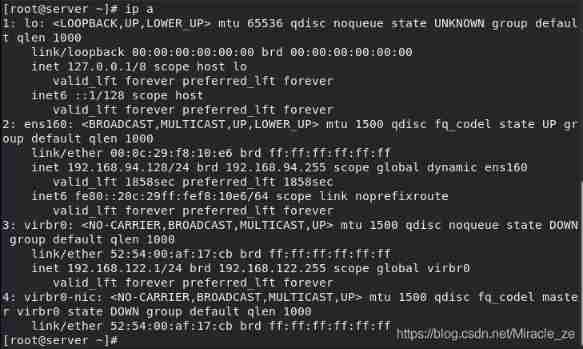
RHSA first day operation

In the small skin panel, use CMD to enter the MySQL command, including the MySQL error unknown variable 'secure_ file_ Priv 'solution (super detailed)

Static vxlan configuration
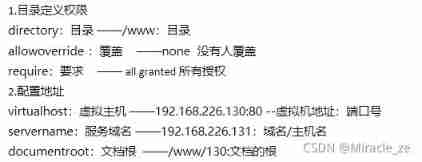
Customize the web service configuration file

【深度学习】图像多标签分类任务,百度PaddleClas
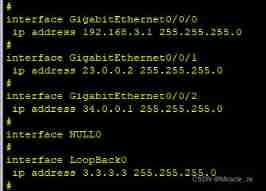
BGP actual network configuration
随机推荐
Customize the web service configuration file
SQL lab 26~31 summary (subsequent continuous update) (including parameter pollution explanation)
leetcode刷题:二叉树21(验证二叉搜索树)
Routing strategy of multi-point republication [Huawei]
Tutorial on principles and applications of database system (010) -- exercises of conceptual model and data model
[play RT thread] RT thread Studio - key control motor forward and reverse rotation, buzzer
Vxlan 静态集中网关
RHSA first day operation
Sort out the garbage collection of JVM, and don't involve high-quality things such as performance tuning for the time being
Zero shot, one shot and few shot
Zhimei creative website exercise
数据库系统原理与应用教程(010)—— 概念模型与数据模型练习题
The left-hand side of an assignment expression may not be an optional property access. ts(2779)
Static routing assignment of network reachable and telent connections
leetcode刷题:二叉树27(删除二叉搜索树中的节点)
静态Vxlan 配置
Object. Simple implementation of assign()
Completion report of communication software development and Application
leetcode刷题:二叉树19(合并二叉树)
Tutorial on the principle and application of database system (008) -- exercises on database related concepts